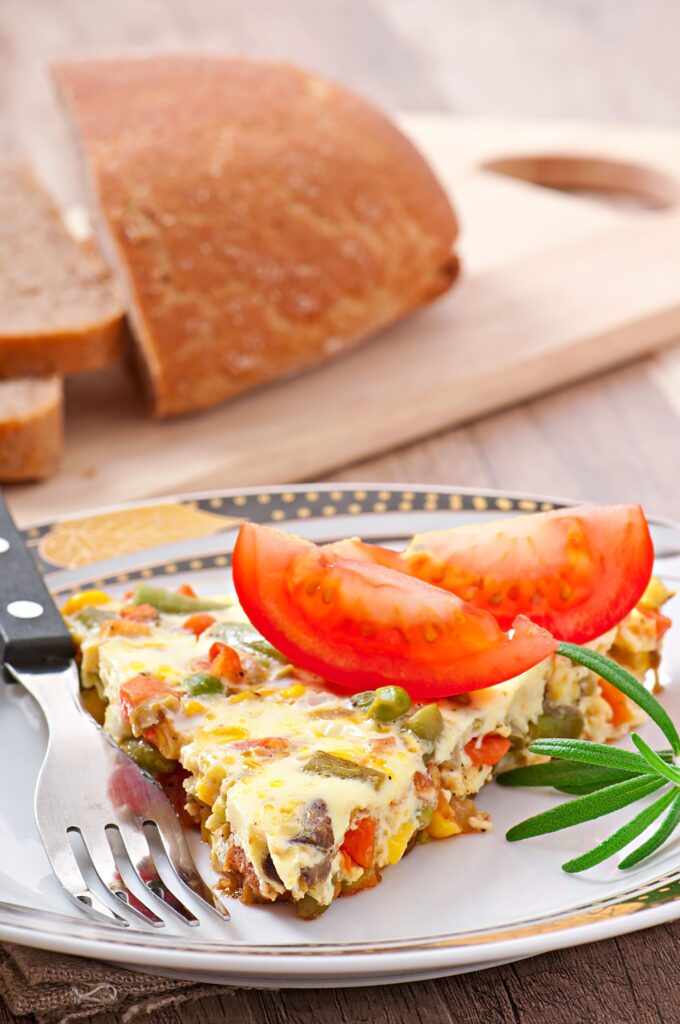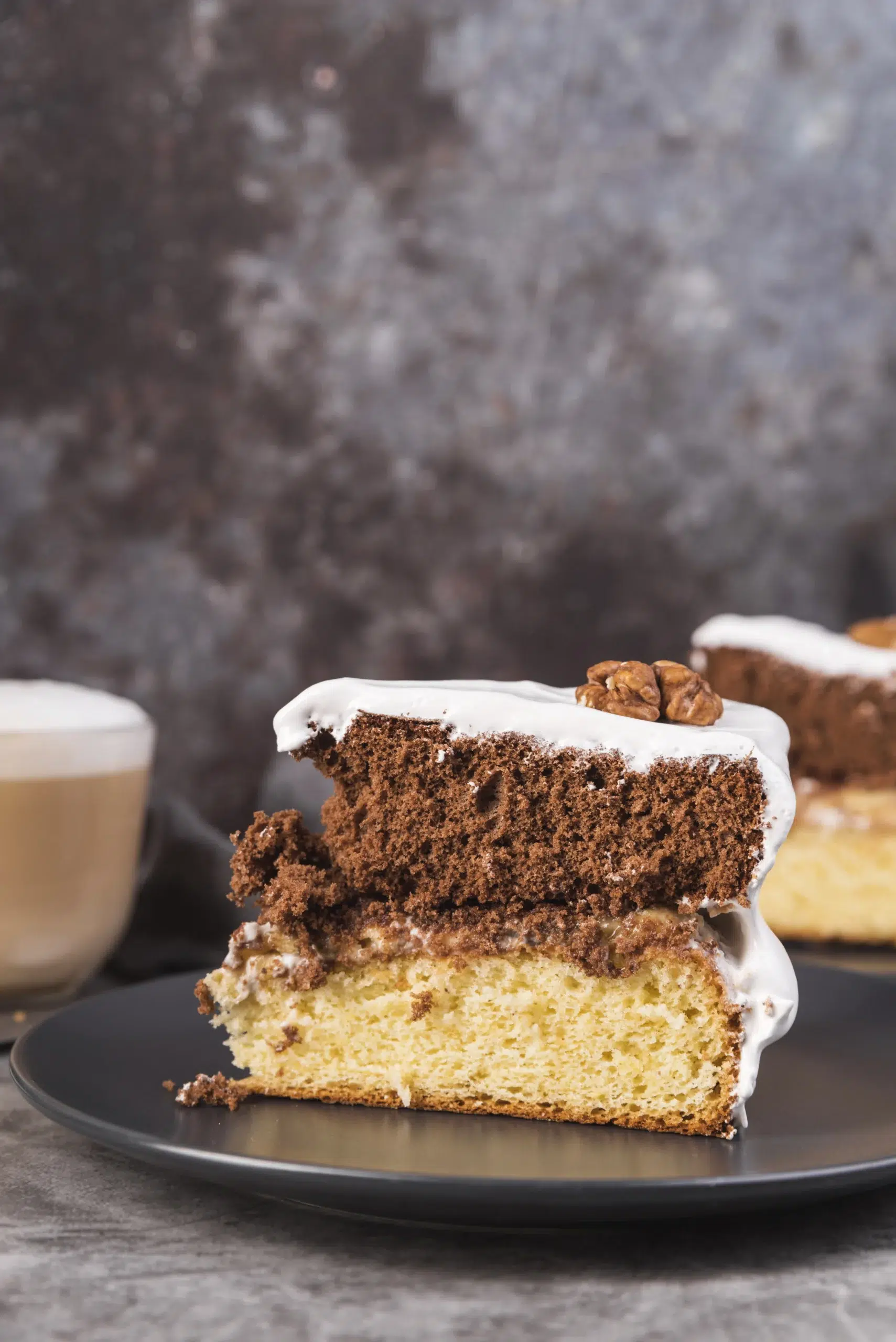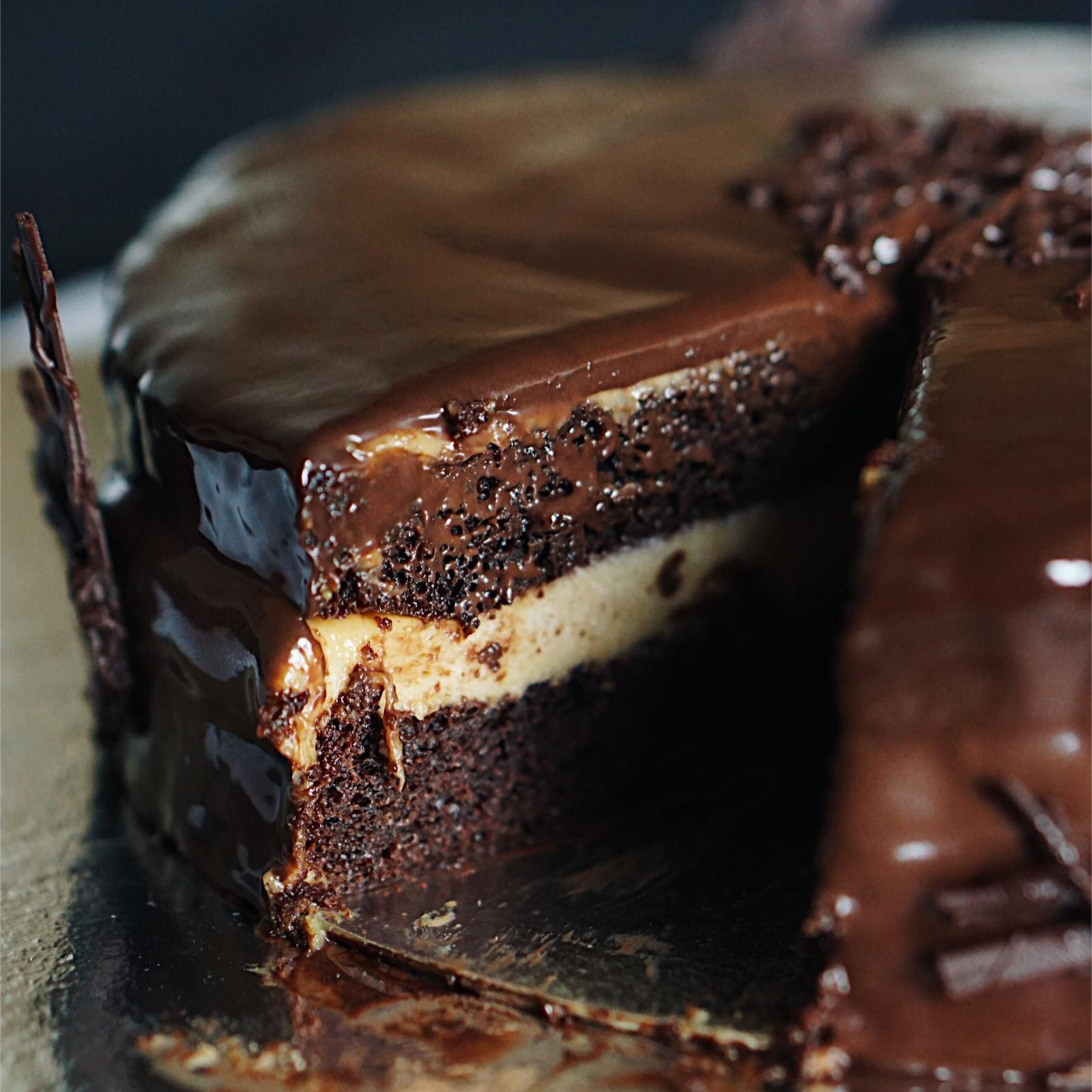There’s nothing better than starting your day with a warm, hearty meal, and an overnight breakfast casserole with bread makes that easier than ever. This simple, make-ahead recipe is perfect for busy mornings, allowing you to enjoy a delicious breakfast without the hassle. Whether you’re preparing for a family brunch, a holiday gathering, or just a stress-free start to your day, this casserole combines convenience and rich flavors that everyone will love.
Overnight breakfast casseroles are a simple yet brilliant concept: you prepare everything the night before, let the flavors meld in the fridge overnight, and pop the dish in the oven the next morning. Whether you’re feeding a crowd for a weekend brunch, hosting a holiday breakfast, or just looking for an easy meal to kickstart your day, this dish checks all the boxes.
This blog post will focus on one of the most versatile and beloved versions of this classic: an overnight breakfast casserole with bread. Bread serves as the perfect base for soaking up the rich flavors of eggs, cheese, and other delicious ingredients. From savory meats and vegetables to gooey layers of cheese, this casserole combines simple ingredients in a way that’s both comforting and impressive.
By the end of this guide, you’ll have everything you need to create a casserole that’s not only easy to prepare but also guaranteed to delight your family and guests. Let’s get started on this flavorful journey!

Why Choose an Overnight Breakfast Casserole with Bread?
An overnight breakfast casserole with bread is more than just a meal; it’s a solution to many common challenges in the kitchen. Whether you’re a busy parent, a host looking to impress, or simply someone who enjoys a hearty and comforting breakfast, this dish is the perfect answer. Let’s dive into the key reasons why this casserole is a must-try addition to your breakfast repertoire.
Convenience for Busy Mornings
Life can get hectic, and mornings often feel like a race against the clock. This is where the overnight breakfast casserole shines. By preparing everything the night before, you eliminate the stress of morning meal prep. Simply assemble the ingredients, let the dish rest in the fridge overnight, and wake up to a ready-to-bake breakfast.
The time you save in the morning can be spent sipping your coffee, enjoying time with family, or tackling other tasks on your to-do list. Plus, there’s minimal cleanup since all the prep work is done in advance. Whether it’s a weekday rush or a relaxed weekend morning, this casserole ensures you start your day with a delicious meal without sacrificing precious time.
Versatility in Ingredients
One of the best things about using bread as the base for this casserole is its ability to pair well with a wide range of ingredients. Bread acts as a blank canvas, soaking up the flavors of everything it’s combined with. This makes it incredibly versatile and allows for endless customization.
- Cheese Options: Whether you prefer the sharpness of cheddar, the creaminess of mozzarella, or the bold flavors of gruyere, there’s a cheese to suit every taste. You can even mix and match cheeses for added complexity.
- Vegetables: Add a healthy twist with vegetables like spinach, bell peppers, mushrooms, or onions. The bread helps balance the flavors, ensuring each bite is perfectly seasoned.
- Meats: From crispy bacon and savory sausage to smoky ham, adding protein to the dish takes it to the next level. For a vegetarian option, plant-based proteins work just as well.
The ability to customize means this dish can cater to a variety of dietary preferences and flavor profiles, making it a favorite for both picky eaters and adventurous food lovers.
Crowd-Pleasing Meal Idea
Hosting a brunch, holiday breakfast, or family gathering? An overnight breakfast casserole with bread is the ultimate crowd-pleaser. Its hearty, comforting nature makes it a hit with guests of all ages, and the ease of preparation allows you to focus on enjoying time with loved ones rather than being stuck in the kitchen.
During the holidays or other special occasions, this dish is particularly valuable. While you’re busy preparing other meals or entertaining guests, the casserole takes care of itself. Its rich, layered flavors are guaranteed to impress, and its ability to serve multiple people with minimal effort makes it an ideal choice for gatherings. Pair it with fresh fruit, pastries, or a light salad to create a balanced and satisfying meal.
Whether it’s Christmas morning, a Sunday brunch, or a casual breakfast with friends, this casserole delivers a perfect combination of taste, convenience, and versatility. It’s the kind of dish that brings people together and leaves everyone asking for seconds!
Ingredients Needed for an Overnight Breakfast Casserole with Bread
To make a truly delicious and satisfying overnight breakfast casserole with bread, the right ingredients are key. The beauty of this dish lies in its simplicity and adaptability, allowing you to customize the flavors to suit your preferences or the occasion. Here’s a detailed breakdown of the essential ingredients and tips for choosing the perfect bread.
Key Ingredients
Let’s take a closer look at the core components that make this casserole flavorful, rich, and perfectly textured.
- Bread
The star of the dish, bread serves as the foundation that soaks up all the delicious flavors of the egg mixture and other ingredients. The type of bread you choose can influence the casserole’s texture and taste. Consider these options:- Sourdough: Adds a slight tang and chewy texture, perfect for a more robust flavor profile.
- French Bread or Baguette: Creates a lighter, airier casserole with a crisp top.
- Whole Grain Bread: Ideal for a heartier, healthier option with a nutty flavor.
- Eggs
Eggs act as the binding agent that holds the casserole together. They create a custard-like consistency when baked, enveloping the bread and add-ins in creamy goodness. Use fresh, high-quality eggs for the best results. - Cheese
Cheese is what makes this dish irresistibly creamy and rich. You can use a single type or mix multiple cheeses to enhance the flavor. Popular choices include:- Cheddar: Adds sharpness and depth.
- Mozzarella: Provides a mild, creamy texture and gooeyness.
- Gruyere or Swiss: Introduces a nutty, slightly sweet flavor.
You can also experiment with spicy cheeses like pepper jack for a kick or feta for a tangy twist.
- Add-Ins
This is where you can get creative and personalize the casserole to your liking:- Vegetables: Bell peppers, spinach, mushrooms, onions, or zucchini add freshness and a pop of color.
- Meats: Cooked bacon, sausage, ham, or even shredded chicken provide a savory, protein-packed punch.
- Spices and Herbs: Add depth and aroma with garlic powder, smoked paprika, black pepper, or fresh herbs like parsley and thyme.
Tips for Choosing the Right Bread
The type of bread you use can make or break your casserole, so it’s essential to choose wisely. Here are some tips to help you select the perfect loaf:
- Fresh vs. Stale Bread
- Stale Bread: Slightly stale bread is ideal for this dish because it absorbs the egg mixture without becoming mushy. If your bread is fresh, consider toasting it lightly to remove excess moisture.
- Why It Matters: Stale bread ensures the casserole maintains its structure, resulting in a perfectly baked dish with a tender, custardy interior and a golden crust.
- Best Bread Textures
- Crusty Bread: Breads with a firm crust, like sourdough or French bread, add texture and prevent the casserole from becoming overly soft.
- Dense Bread: Whole-grain or rye bread adds a hearty element to the casserole, pairing well with bold flavors.
- Avoid Ultra-Soft Bread: Sandwich bread or pre-sliced white bread can become too soggy and may not hold up well in the casserole.
- Specialty Bread Options
- For a sweet twist, consider using cinnamon raisin bread or brioche.
- For a savory flavor boost, opt for bread with herbs, cheese, or garlic baked into it.
By paying attention to these ingredient details and tips, you can ensure your overnight breakfast casserole with bread is packed with flavor, texture, and a perfect balance of ingredients. This foundation opens up endless possibilities for variations to suit any palate!

Step-by-Step Guide to Making an Overnight Breakfast Casserole
Creating a delicious overnight breakfast casserole with bread is a straightforward process, but paying attention to each step ensures a perfect result. Here’s a detailed guide to help you make this crowd-pleasing dish effortlessly.
Preparing the Ingredients
- Cutting and Prepping the Bread
- Start by cutting your chosen bread into bite-sized cubes or slices, depending on the casserole style you prefer. Cubes work well for a chunkier texture, while slices create a layered effect.
- If your bread is fresh, consider leaving it out for a few hours or lightly toasting it to reduce moisture. Stale bread is ideal for soaking up the egg mixture without becoming soggy.
- Whisking the Eggs
- In a large bowl, whisk together the eggs until the yolks and whites are fully combined.
- Add milk or cream to the eggs to create a rich, custard-like mixture. Use about 2 cups of liquid for every 8 eggs to achieve the right consistency.
- Season the mixture with salt, pepper, and any other spices or herbs you like, such as garlic powder, smoked paprika, or fresh parsley.
- Prepping Add-Ins
- Cook any meats like bacon or sausage and chop them into bite-sized pieces.
- Dice vegetables such as onions, bell peppers, or mushrooms. Sauté them lightly for a softer texture and enhanced flavor.
- Grate or shred your cheese of choice and keep it ready for layering.
Assembling the Casserole
- Layering the Ingredients
- Grease a baking dish with butter or cooking spray to prevent sticking.
- Start with a layer of bread cubes, spreading them evenly across the bottom of the dish.
- Add a layer of cooked meat, sautéed vegetables, and shredded cheese. Repeat the layers if needed, ensuring even distribution of ingredients.
- Pouring the Egg Mixture Evenly
- Slowly pour the whisked egg mixture over the layered ingredients. Make sure to cover all areas, allowing the bread to absorb the liquid.
- Use a spatula to press down gently on the casserole, ensuring the bread is fully soaked in the mixture.
Overnight Refrigeration
- Importance of Allowing the Flavors to Meld
- Cover the casserole dish tightly with plastic wrap or aluminum foil and place it in the refrigerator overnight (or at least 6–8 hours).
- During this time, the bread absorbs the egg mixture, and the flavors of the ingredients meld together beautifully. This step is crucial for achieving a cohesive, flavorful casserole.
- The overnight rest also saves you time in the morning, so you can simply bake and enjoy!
Baking and Serving
- Baking Time and Temperature Tips
- Preheat your oven to 350°F (175°C) while you take the casserole out of the fridge to warm slightly.
- Bake the casserole, uncovered, for 40–50 minutes, or until the top is golden brown and the center is set. Insert a knife or toothpick into the middle; if it comes out clean, the casserole is ready.
- For a crispy top, consider adding a sprinkle of extra cheese during the last 10 minutes of baking.
- Suggestions for Garnishes and Serving
- Let the casserole cool for about 5 minutes before slicing and serving. This helps it hold its shape.
- Garnish with fresh herbs like chopped parsley or chives for a pop of color and added flavor.
- Serve with a side of fresh fruit, a dollop of sour cream, or a drizzle of hot sauce for extra flair. Pair it with coffee, tea, or a light mimosa for a complete breakfast or brunch experience.
By following these steps, you’ll have a perfectly baked overnight breakfast casserole that’s rich in flavor, simple to prepare, and sure to impress!
Variations and Customizations for Your Casserole
One of the most appealing aspects of an overnight breakfast casserole with bread is its flexibility. You can easily tailor the recipe to suit your personal preferences, dietary needs, or the ingredients you have on hand. Here’s a breakdown of different ways to customize your casserole, ensuring it becomes a versatile favorite for any occasion.
Meat Options
Adding meat to your casserole enhances its richness and makes it a satisfying, protein-packed meal. Here are some ideas for incorporating meat into your dish:
- Bacon
- Crispy, smoky bacon adds a bold flavor and pairs well with almost any combination of cheese and vegetables. Cook the bacon beforehand and crumble it into the casserole for even distribution.
- Sausage
- Breakfast sausage (pork, turkey, or chicken) is a classic choice. Use ground sausage or pre-cooked sausage links sliced into bite-sized pieces. For added flavor, try spicy sausage or varieties seasoned with herbs like sage.
- Ham
- Diced ham is another great option, offering a slightly sweeter, milder flavor. It works particularly well in casseroles with cheddar or Swiss cheese.
- Vegetarian Alternatives
- For a meat-free option, try plant-based sausage or crumbled tofu seasoned with smoked paprika, garlic powder, and other spices. Mushrooms can also serve as a savory, hearty substitute for meat.
Cheese Choices
Cheese is essential for a creamy, indulgent casserole, and the type you choose can significantly influence the flavor. Consider these ideas for creating a cheesy masterpiece:
- Mixing Cheeses for Unique Flavors
- Combine sharp cheddar with mozzarella for a balance of boldness and creaminess.
- Use gruyere or Swiss for a nutty, slightly sweet flavor that pairs beautifully with ham or vegetables.
- Add parmesan for a salty, umami kick, or goat cheese for a tangy, creamy texture.
- For a spicy twist, try pepper jack or add a touch of blue cheese for a more distinctive flavor profile.
- Layering Cheese
- Sprinkle cheese between the layers of bread and add-ins to ensure gooey, melty goodness throughout the casserole.
Dietary Adjustments
With a few thoughtful substitutions, your casserole can easily accommodate dietary restrictions or preferences:
- Gluten-Free Bread
- Use gluten-free bread to make the dish suitable for those with gluten sensitivities or celiac disease. Many gluten-free breads work well for soaking up the egg mixture, especially those made from hearty grains like millet or sorghum.
- Dairy-Free Cheese Options
- For a dairy-free version, choose plant-based cheese alternatives made from almonds, cashews, or soy. These are widely available and can mimic the flavors of traditional cheeses like mozzarella or cheddar.
- Egg Substitutes
- For an egg-free variation, use a plant-based egg replacer or a mixture of silken tofu and plant-based milk to create a similar custard-like texture.
Seasonal and Regional Twists
Incorporating seasonal ingredients or regional flavors can elevate your casserole and make it truly unique:
- Seasonal Vegetables
- Spring: Asparagus, leeks, or fresh peas add a light, fresh flavor.
- Summer: Sweet corn, cherry tomatoes, or zucchini bring vibrant colors and taste.
- Fall: Butternut squash, kale, or caramelized onions add warmth and earthiness.
- Winter: Root vegetables like sweet potatoes, parsnips, or roasted red peppers create a comforting, hearty dish.
- Spices and Herbs
- Experiment with spices like smoked paprika, cumin, or nutmeg for added depth.
- Add fresh herbs like basil, thyme, or rosemary for a fragrant twist.
- Regional Twists
- Mediterranean: Use feta cheese, sun-dried tomatoes, olives, and spinach for a fresh, Mediterranean-inspired casserole.
- Mexican: Incorporate chorizo, black beans, jalapeños, and a blend of cheddar and pepper jack cheeses. Serve with salsa and avocado.
- French: Combine gruyere, caramelized onions, and herbs de Provence for a sophisticated flavor.
By exploring these variations and customizations, you can make the casserole your own, creating a dish that’s perfectly suited to your tastes or the occasion. The possibilities are endless, and each version is guaranteed to be delicious!
Pro Tips for the Perfect Overnight Breakfast Casserole
Mastering an overnight breakfast casserole involves a few key techniques to ensure the dish comes out perfectly every time. From achieving the right texture to maximizing leftovers, these pro tips will elevate your casserole game.
Preventing Sogginess
A soggy casserole can ruin the dish’s texture, but with proper attention to detail, you can avoid this common pitfall:
- Balancing Liquid to Bread Ratio
- Use the Right Amount of Liquid: A good rule of thumb is about 2 cups of liquid (milk, cream, or a combination) for every 8 large eggs. This ensures the custard is rich and thick enough to bind the ingredients without oversaturating the bread.
- Monitor Bread Absorption: Make sure all the bread pieces are coated in the egg mixture but not swimming in excess liquid. Pressing the bread down gently with a spatula after pouring the mixture helps ensure even absorption.
- Choosing the Right Bread
- Use slightly stale or toasted bread, as it absorbs the liquid more effectively without turning mushy. Avoid soft sandwich bread, which tends to break down too quickly.
- Layering Thoughtfully
- Distribute ingredients evenly and avoid overcrowding the bread layer with too many wet add-ins like tomatoes or watery vegetables. If you’re using vegetables with high water content, sauté them first to remove excess moisture.
Getting the Perfect Bake
A perfectly baked casserole should have a golden crust, a tender interior, and evenly cooked layers. Here’s how to achieve it:
- Ensuring Even Cooking Throughout
- Preheat the Oven: Always start with a fully preheated oven to ensure consistent cooking from the beginning.
- Use the Right Dish: A ceramic or glass baking dish works best for even heat distribution. Avoid using metal pans, which can heat unevenly and cause overcooking on the edges.
- Middle Rack Placement: Bake the casserole on the middle rack to prevent the top from browning too quickly while allowing the interior to cook thoroughly.
- Covering and Uncovering
- For the first 30 minutes of baking, cover the casserole with aluminum foil to trap steam and ensure the custard sets evenly. Remove the foil during the last 15–20 minutes to allow the top to brown and crisp.
- Checking for Doneness
- Insert a knife or skewer into the center of the casserole. If it comes out clean or with a few moist crumbs (but no liquid), the casserole is done. If the top is browning too quickly while the interior still needs time, cover it loosely with foil and continue baking.
Storage and Reheating Tips
Leftover breakfast casserole can be just as delicious, but proper storage and reheating techniques are essential to maintain its quality:
- Best Practices for Leftovers
- Allow the casserole to cool to room temperature before storing it.
- Cut it into individual portions for easier reheating and place them in airtight containers or wrap them tightly in plastic wrap.
- Store in the refrigerator for up to 3–4 days or freeze for up to 2–3 months.
- Reheating Instructions
- Microwave: Reheat single portions in the microwave on medium power for 1–2 minutes. Cover with a microwave-safe lid to prevent drying out.
- Oven: For larger portions, preheat the oven to 325°F (160°C) and cover the casserole with foil. Heat for 15–20 minutes, or until warmed through.
- Avoid Overheating: Reheating too quickly or at high temperatures can dry out the casserole. Take your time to ensure it stays moist and flavorful.
- Refreshing the Texture
- Sprinkle a little shredded cheese on top before reheating to restore creaminess.
- For a crispy topping, reheat the casserole uncovered in the oven for the last 5 minutes.
By following these pro tips, your overnight breakfast casserole will consistently turn out flavorful, well-cooked, and perfectly textured. Plus, you’ll make the most of any leftovers, ensuring nothing goes to waste!
Conclusion
An overnight breakfast casserole with bread is more than just a recipe; it’s a practical, versatile, and delicious way to transform your mornings. Whether you’re looking for a make-ahead meal to simplify your routine or a dish that can wow guests at brunch, this casserole delivers on all fronts.
Recap of Benefits
- Convenience: Prepare it the night before and enjoy a stress-free morning as your oven does the work.
- Versatility: From meat and cheese options to seasonal vegetables and regional twists, this dish can be customized to suit any taste or occasion.
- Crowd-Pleasing Appeal: Perfect for family breakfasts, holiday gatherings, or brunch with friends, this casserole is guaranteed to impress.
- Effortless Leftovers: Any leftovers store and reheat beautifully, making it a practical choice for meal planning.
Not only is this casserole a time-saver, but it also offers the comforting flavors and textures of a home-cooked breakfast. It’s a hearty dish that brings people together and is sure to leave everyone asking for seconds.
Encourage Readers to Try the Recipe
If you’re hosting a special occasion, trying a new twist, or simply making it for a regular weekday breakfast, this casserole is a versatile canvas for your culinary imagination.





